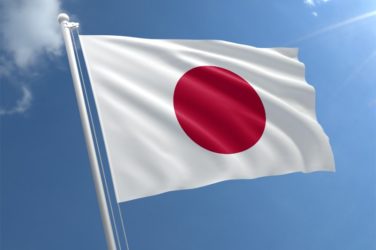
- ICMA-Bloomberg report that the total outstanding issuance of tough legacy bonds among APAC issuers1 is USD 190 billion equivalent across 560 issuances2, with Japan, China, Australia accounting for 95%
- In APAC, issuance of new LIBOR-linked bonds continues, in some cases without fallbacks in place
- The number of tough legacy bonds in APAC which feature inadequate fallbacks or no fallbacks at all is 447 out of 560, or 80% of the total outstanding issuance of tough legacy bonds among Asia-Pacific issuers
- Accelerated action required by issuers as transition from LIBOR to risk free rates looms
A report by ICMA and Bloomberg on tough legacy bonds in APAC has found that work will need to accelerate significantly to mitigate potential for disruption of the APAC bond markets as a result of the transition from LIBOR to risk free rates (RFRs).
We are looking forward to hearing more about LIBOR transition this morning. You can access the paper launched at this event here ⤵️https://t.co/CH2URnrf8G
The event iss co-hosted with @Bloomberg pic.twitter.com/vayiXTnx3b
— ICMA (@ICMAgroup) May 25, 2021
The announcements made by the Financial Conduct Authority on future cessation and loss of representativeness of the LIBOR benchmarks on 5 March 20213 mark an important final step in the successful transition away from LIBOR, and globally, there is now a better understanding of the end game for LIBOR, including the dates for its cessation in different jurisdictions.
Outstanding tough legacy bonds in APAC
‘Tough legacy bonds’ as further defined in the report are debt securities which are linked to the LIBOR of any currency, due to mature after the cessation of LIBOR in the relevant currency.
Globally, tough legacy bonds comprise USD 854 billion equivalent across 4,998 issuances, according to Bloomberg data. In APAC, they comprise USD 190 billion equivalent across 560 bonds, mostly in Japan, China and Australia, which together account for approximately 95% of the total APAC volume. 74% of that is primarily concentrated among financial issuers.
According to the Bloomberg data, as at 1 February 2021, 309 of those 560 bonds (55% of tough legacy issuances) have fallback language in place. Of these, 196 bonds (35% of tough legacy issuances) have only a ‘market disruption event’ trigger, which would not contemplate the permanent cessation of LIBOR. Another 251 bonds (45% of tough legacy issuances) do not have any fallback language at all. Taken together, this figure of 447 (or 80% of tough legacy issuances) becomes quite significant.
“Prior to our report, publicly available data has been generally based on individual national markets or sub-markets, and difficult to aggregate or reconcile. We hope this new extensive analysis will help market participants and supervisory authorities develop more efficient strategies to address the tough legacy bond problem in APAC,” said Bing Li, Head of APAC, Bloomberg.
Mushtaq Kapasi, Chief Representative, Asia-Pacific, ICMA said: “The tough legacy bond problem in Asia-Pacific is not insignificant, with 80% of tough legacy bonds having inadequate fallbacks, or no fallbacks at all. The transition away from LIBOR will require issuers and investors to review their existing LIBOR-linked bond documentation to assess what kind of fallbacks they contain, and consider what actions need to be taken.”
New LIBOR-linked bonds
The report noted that the best way to minimise LIBOR transition risks is not to issue new bonds linked to LIBOR, and the GBP and USD market have responded to this with prolific use of the relevant RFRs for new issues of bonds and securitisations. But if LIBOR-linked issuance is unavoidable, fallbacks for new issuances of USD LIBOR and JPY LIBOR have been recommended. However, issuance of new LIBOR-linked bonds is continuing in APAC, in some cases without the recommended fallbacks in place. From 2019-2020, USD12 billion of new issuances had no fallback language.
New RFRs
Methodologies and conventions to accompany new RFRs are keeping pace, and publication of RFR indices may make it easier for market participants to use the various RFR compounding methodologies. And while underlying systems and infrastructure may need to be upgraded, issuers and bondholders are largely able to accommodate the new rates, including their in-arrears methodologies and associated conventions.
Bing Li added: “It is essential that market participants have adequate systems and infrastructure in place to manage the transition from LIBOR, not only for tough legacy, but also for new issuance and investment linked to RFRs, as there are important fundamental differences between IBORs and RFRs. New calculation methodologies and their associated conventions will need to be facilitated, while trading and liquidity risks have to be adequately considered.”
Solutions
In summary, the report found that 80% of tough legacy APAC bonds have inadequate or no fallbacks in place at all, and that transactions in APAC are continuing to reference LIBOR without adequate fallbacks in place.
The report also set out proposed solutions for addressing the risks of tough legacy, including the feasibility of consent solicitation under different legal systems, the application of certain legislative interventions to APAC tough legacy bonds under New York, Japanese and English law and the potential for the continuation of synthetic JPY LIBOR for one additional year after the end of 2021.
To see the full report, please click here.
Source: ICMA




